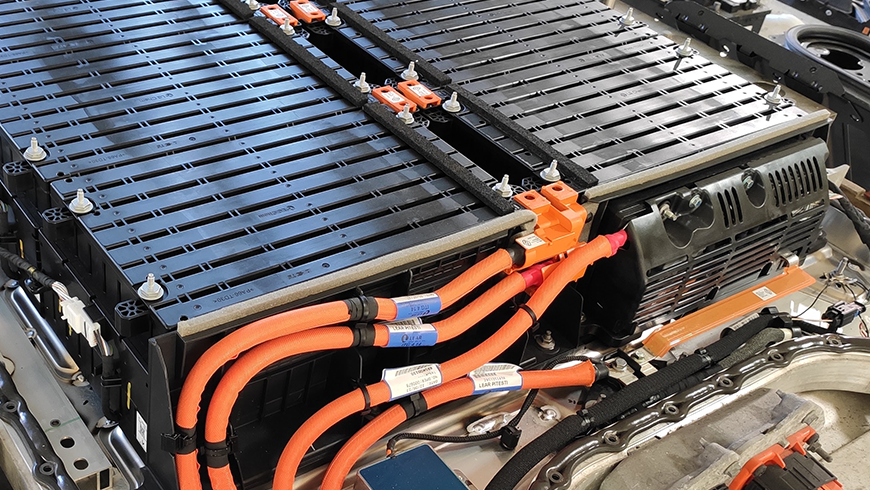
By Stephan Kaelin.
Although they are indispensable nowadays, there is still a lack of knowledge and skepticism about batteries. The Forum Energy Storage Switzerland therefore compiled a compendium on research, development, potential and system integration of battery storage systems. Marcel Gauch from Empa’s Technology & Society Lab has taken on the controversial life cycle assessments of batteries as well as recycling.
“The increasing spread of decentralized renewable energy sources together with battery storage systems that are optimally integrated will turn the electricity system upside down – in the best sense of the word!”, writes Jonas Mühlethaler, head of the Electrical Storage working group within the Forum Energy Storage Switzerland in the compendium that has been published today. However, a system-serving use of battery storage will not happen “by itself”. Homeowners will have to decide whether it makes sense for them to invest in a stationary battery today or whether it would be better to wait. Grid operators and regulators face even bigger questions: How can battery storage be integrated in a way that results in an efficient, ecological, robust and affordable energy system? What role can batteries for electric vehicles play in this, and how must appropriate regulations be designed?
The debate is often dominated by excessive costs and the supposedly “catastrophic” life cycle assessment (LCA) of batteries, or reservations are expressed about their safety. What is the real situation regarding costs/benefits and the life cycle assessment? And how do recycling and a consistent circular economy bring improvements? The Forum Energy Storage Switzerland, a think tank of aeesuisse, the organization of the economy for renewable energies and energy efficiency, sought answers to these and other questions.
Critical towards new things
As a member of the Forum, Empa researcher Marcel Gauch helped to shape the topic around LCA and recycling in the compendium. In his research at Empa’s Technology & Society Lab, he repeatedly encounters the same perception about the problematic nature of certain materials: “Raw materials such as steel or lead, which have been used traditionally and for a long time, are often considered unproblematic. By contrast, raw materials are viewed more critically when they are used for new or emerging technologies.” And indeed, it had recently become apparent that earlier analyses with poor LCAs had been based on unrealistic assumptions. More recent studies showed significantly better results.
Even though lithium-ion batteries appear to be almost without alternative today, there is extensive research on battery technologies with other chemical compositions. Gauch sees great potential in these latest developments, but also in improved design and manufacturing methods, to further improve the eco-balance of batteries. Radical visions of future batteries that deviate from today’s principles make people sit up and take notice. “It is all the more important now that this creativity is given room and that regulatory measures such as norms and standardization do not intervene too early,” he says.
Recycling rates of 90 percent
Once the raw materials for batteries have been extracted from their mineral deposits, it is important to keep them in the cycle for as long as possible. Battery recycling has been a legal obligation for years. Today, recycling rates of around 90 percent are already common for larger batteries from industry and vehicles – however, there is still no uniform definition of what counts towards the recycling rate. The aim should be to recover materials, which in turn serve as secondary raw materials, rather than thermal recycling as a fuel substitute.
Before recycling, however, it is important to extend the useful service life of batteries as much as possible. “Vehicle batteries, for example, can certainly be used as stationary electricity storage in a building in a second phase of their life,” Gauch explains. To promote the recyclability of batteries, Empa is participating alongside several other research institutions and companies in CircuBAT, a lighthouse project of Innosuisse, the Swiss Agency for Innovation Promotion. Together, they are looking for optimization possibilities for increased sustainability in all stages of the battery’s life cycle.
Technology and Society, Empa
Source: EMPA, Nov 16, 2022
